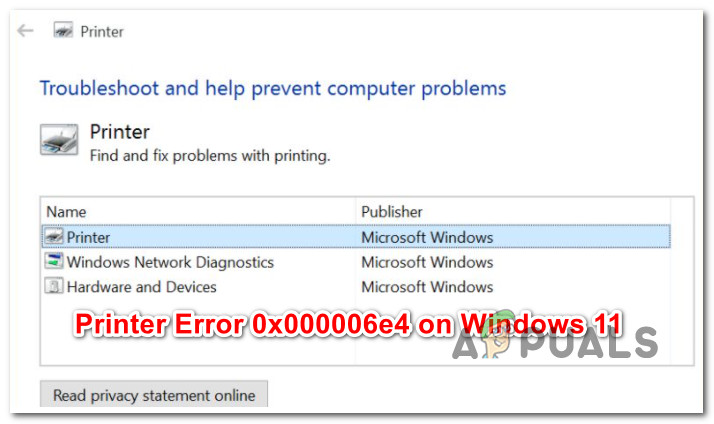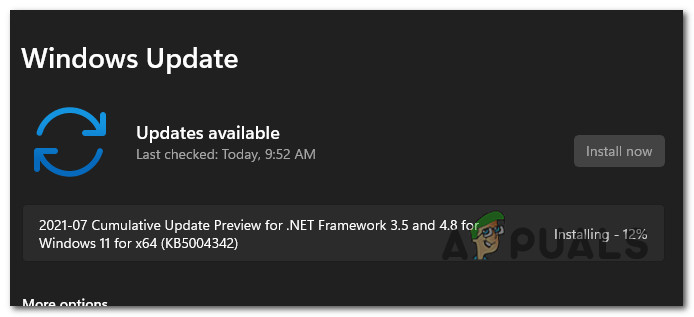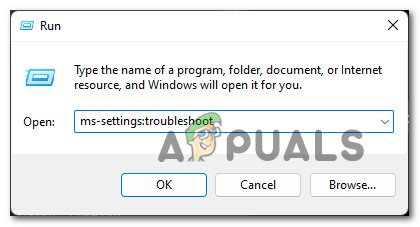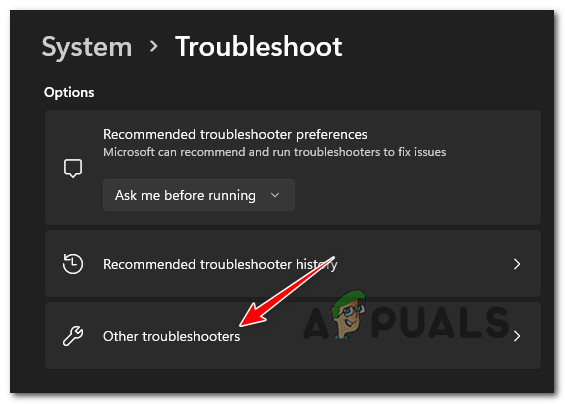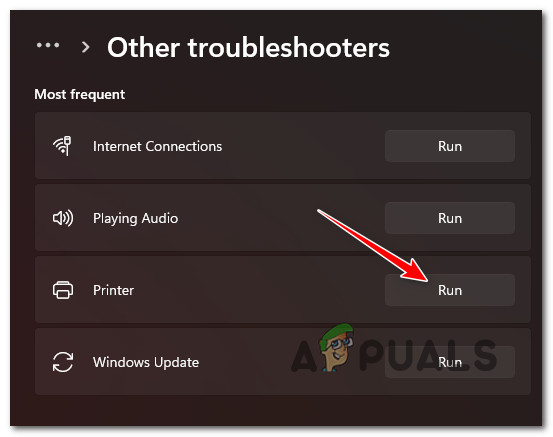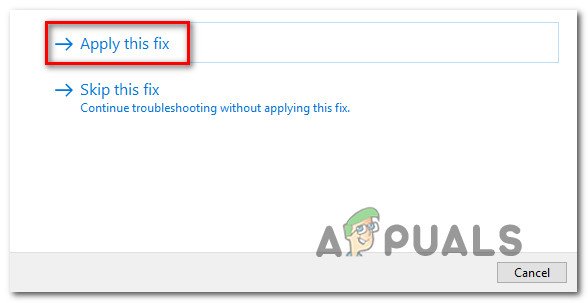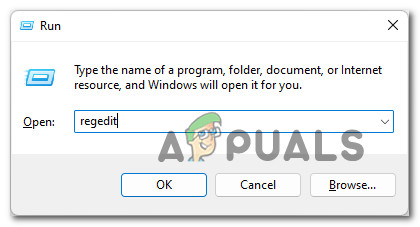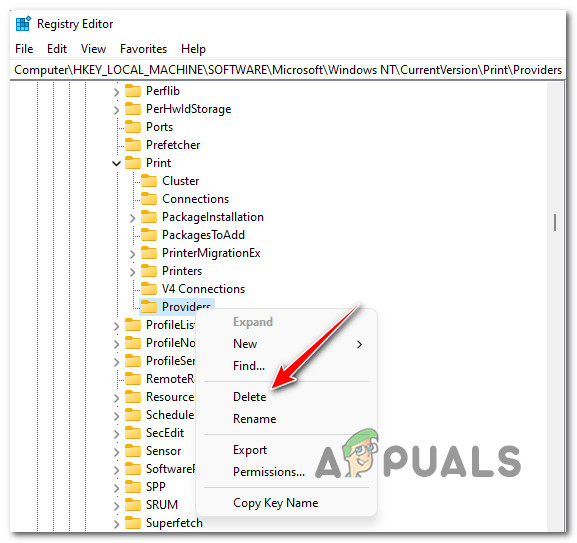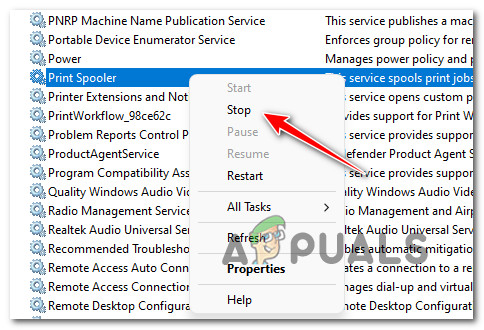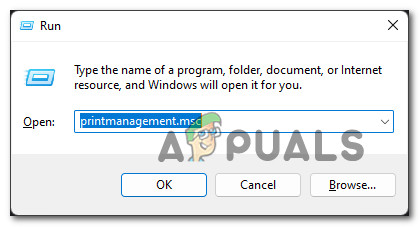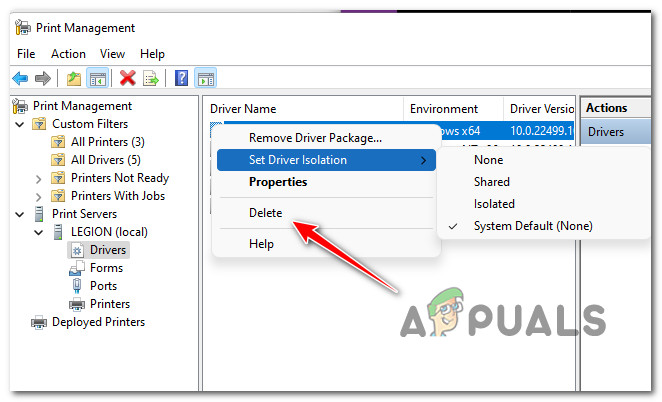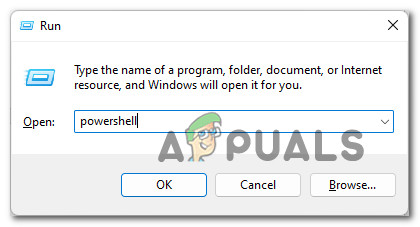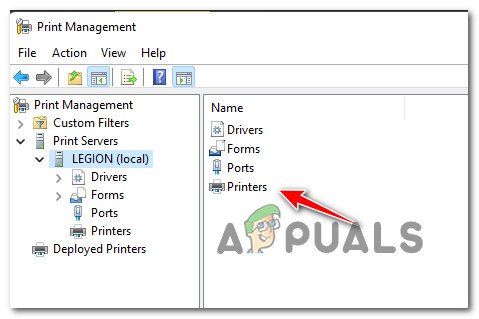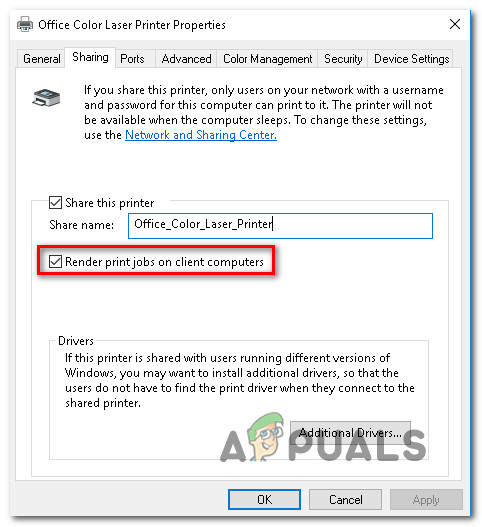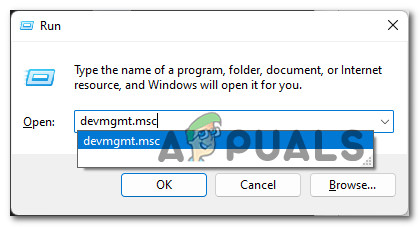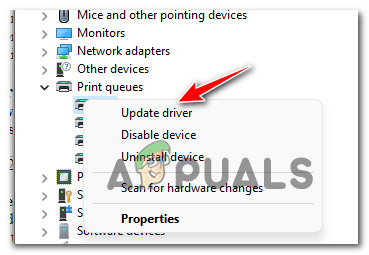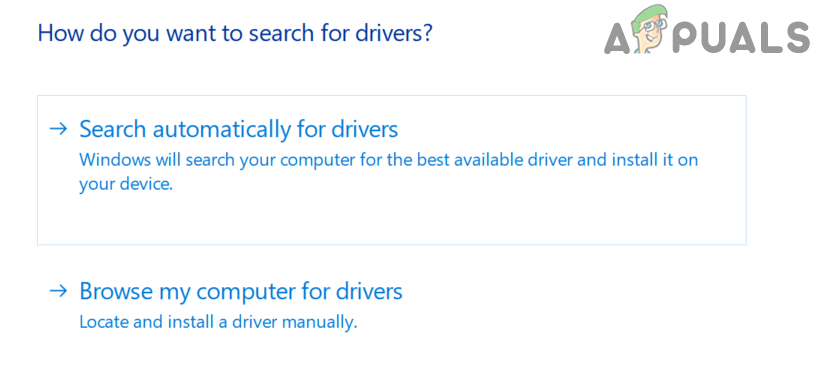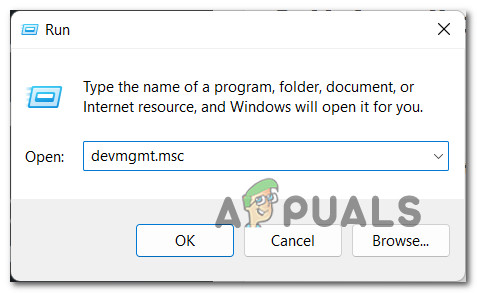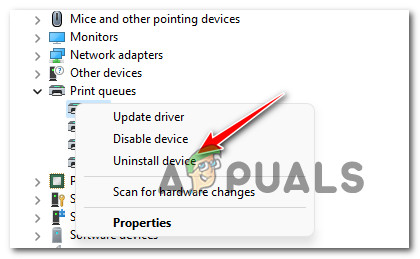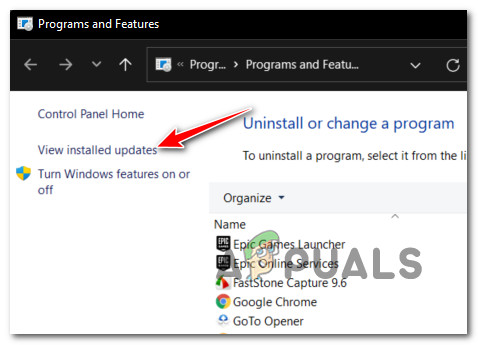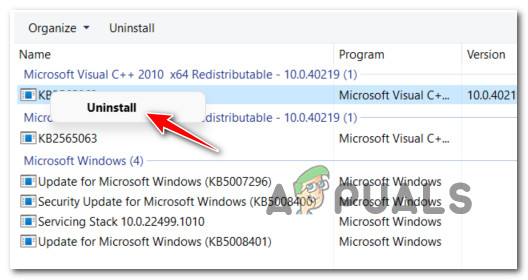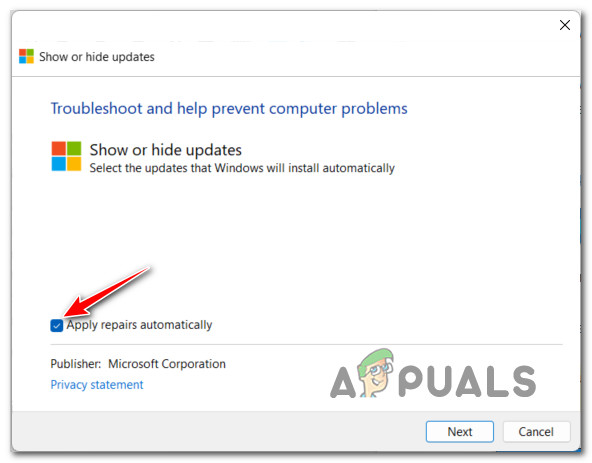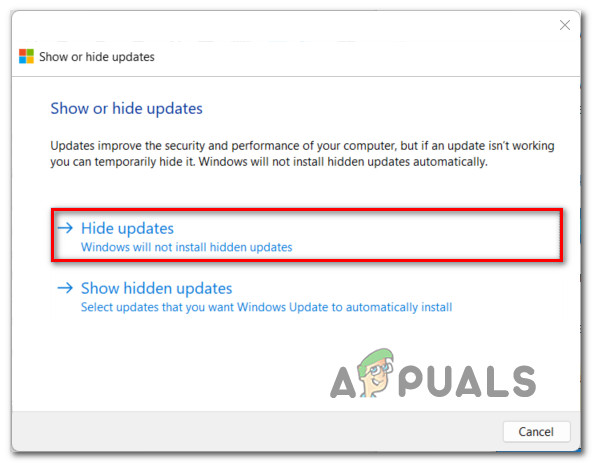Update: Depending on the type of printer that you’re using, you might also encounter the 0x00000709 (ERROR_INVALID_PRINTER_NAME) or 0x0000007c (ERROR_INVALID_LEVEL) error instead. These error codes are also directly linked with the bad KB5007247 error. After investigating this particular issue thoroughly, we realized that several different scenarios might be causing this issue. Here’s a list of potential culprits that might be responsible for this issue: This problem is widespread, judging by the sheer number of people talking about it on the internet. Fortunately, there are a lot of viable fixes that have surfaced from all of these discussions about Microsoft’s inability to fix one thing without breaking another. Here’s a list of methods that other affected users have successfully used to fix the 0x000006e4 printer error on Windows 11.
1. Install hotfix via Windows Update
Since Microsoft already acknowledged that it’s working on a hotfix to fix the issuer brought about by the KB5007247, the first thing you should do when troubleshooting this issue is see if the hotfix is waiting to get installed. If you have any pending updates waiting to get installed and one of them is a cumulative update, chances are one of the issues addressed is the 0x000006e4 (RPC_S_CANNOT_SUPPORT) error. Note: Even when Microsoft is ready to release this hotfix, the updating will be handled upon segments, so don’t expect to get your prompt to update immediately after MS announces it. Follow the instructions below for step-by-step instructions on installing the hotfix and ensuring that you’re using the latest available build for Windows 11. Here’s what you need to do: In case no hotfix is available in your case, move down to the next potential fix below.
2. Run the Windows Printer Troubleshooter
If you’re dealing with a standard printer inconsistency, chances are your Windows 11 installation will be able to fix the issue automatically. To test this theory, you should try running the Windows Printer Troubleshooter and applying the recommended fix. Note: This utility will start analyzing your current situation and determine if any of the repair strategies that this tool knows are applicable in your scenario. For detailed instructions on how to do this, follow the instructions below to run the Windows Troubleshooter and apply the recommended fix: If the problem is still not fixed, try the next potential fix below.
3. Remove Client Side Rendering Print Providers reg key
As it turns out, you might expect to see this error due to an inconsistent key related to the Client Side Rendering Print Providers that are currently active for your network printer. Other users dealing with this issue (particularly network administrators) have managed to fix this issue by using the Registry Editor utility to delete the Providers value before restarting the Print Spooler service and adding the Printer once again. If you haven’t tried this fix yet, follow the step-by-step instructions below to deploy it: Note: Before starting this process, it’s essential to take your time to back your registry data in advance. If you’re still unable to your network printer, move down to the next potential fix below.
4. Remove the printer package via Print Management
If you’re managing your Printer via Print Management, another thing you should try is to remove the printer package from the utility before making the connection once again. This will be effective in those cases where the problem only started to occur after more PCs were added to the local network that was all using the same printer server. Follow the instructions below to remove the printer package via Print Management temporarily: Note: The instructions below should work on every recent Windows version where the Print Management utility is present. If the problem is still not fixed even after removing the printer package via Print Management, move down to the next potential fix below.
5. Create an automated PowerShell script
Suppose you are dealing with this issue when attempting to install printers from a print server, and this problem started to occur immediately after installing the KB5006670 update. In that case, you can automate this process by re-configuring the server to render print jobs on the client computers. However, if you have to do this for multiple printer servers, the best solution would be to automate the actual steps via Powershell. This way, you can quickly deploy the 0x000006e4 fix for every affected machine easily. Here’s what you need to do: If this problem is still not fixed, move down to the next potential fix below.
Re-add the removed reg keys onto the Print Server
As it turns out, one of the main reasons that label the kb5006670 update as bad is because, on some configurations, it ends up removing two reg keys – these keys (RestrictDriverInstallationToAdministrators) and (RpcAuthnLevelPrivacyEnabled) is a requirement for a lot of printers that are set up over a local network. So if you want to get the old functionality back, one way to do it is to add both of these keys back to the print server, and you should be good to go. Follow the instructions below for steps on doing this: If the same kind of issue is still occurring, move down to the next potential fix below.
6. Disable ‘Render print jobs on client computers’ for your Print Server (if applicable)
If adding the two reg keys that the problematic update has most likely removed didn’t fix the issue in your case, the next thing you should try is to see if you can select the problem by using the Printer Management utility. Several affected users that we’re also dealing with this problem have confirmed that the problem was finally fixed after they accessed the Printer Server via the Print Management utility and disabled ‘Render print jobs on client computers’ from the hearing tab of the Printer that’s triggering the 0x000006e4. Follow the instructions below for specific instructions on disabling the ‘Render print jobs on client computers’ feature from the Sharing tab of your Printer server via the Print Management utility: If the same 0x000006e4 error is still occurring, move down to the next potential fix below.
7. Install the latest printer driver
If you’ve come this far without tangible results, you should also consider that a problematic driver might be the root cause of this particular issue. As it turns out, the 0x000006e4 error might occur if an outdated or corrupted printer driver ends up affecting the connection between the printer server and the Printer that’s connected to the local network. If you find yourself in this particular scenario, there are two ways forward: Fortunately, you don’t have to choose between the two methods since we covered both potential approaches. Follow one of the sub-guides below, depending on the system that you wish to take.
7.1. Update printer manually
If you decide to go this route, you will essentially rely on Device Manager to scan for a new driver version that’s newer than the one you’re currently using for your Printer. Depending on your printer model, this might work, or it might not. Results will vary. Here’s what you need to do:
7.2. Update Printer via Windows Update
Another way to go around fixing this issue is to rely on force Windows Update to download the latest compatible driver version for your Printer. The way you do this is by using Device Manager to uninstall the printer device. By doing this, you’ll force your operating system to download and install the latest compatible version the next time you boot up. Follow the instructions below: If you’re still encountering the same 0x000006e4 error after following the instructions above, move down to the following method below.
8. Uninstall problematic Windows Update
If you’ve come this far without a solution, it’s time to get back to the root of the issue. We know for sure that the KB5007247 is responsible for this printing issue on Windows 11. So if everything else has failed, the final thing you can try is to uninstall the bad update and see if the printing connectivity resumes. But keep in mind that just uninstalling the KB5007247 update won’t be enough – you’ll also need to use a specialized utility to hide the update and make sure it doesn’t install again (at least until MS releases an official fix) Follow the instructions below to uninstall and hide the problematic KB5007247 Windows Update: Note: Once Microsoft finally gets around to releasing a fix for this issue, you can use this utility again to unhide the update. To do so, click on Show Hidden update instead and select KB5007247.
Fix: Error Printing Message on Windows 10How to Fix “Error Code: Non-Printing Features are Available” Epson?How to Fix Error Reference Source not Found when Printing from Office 2010,…How to Disable Printing in Microsoft Edge on Windows 10?
